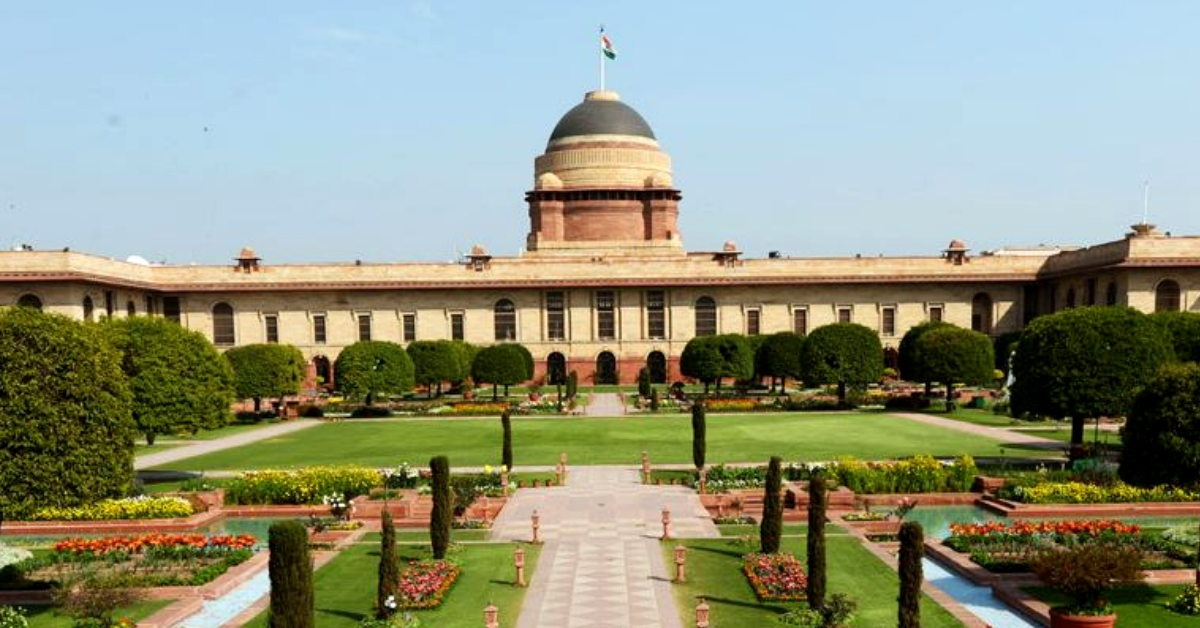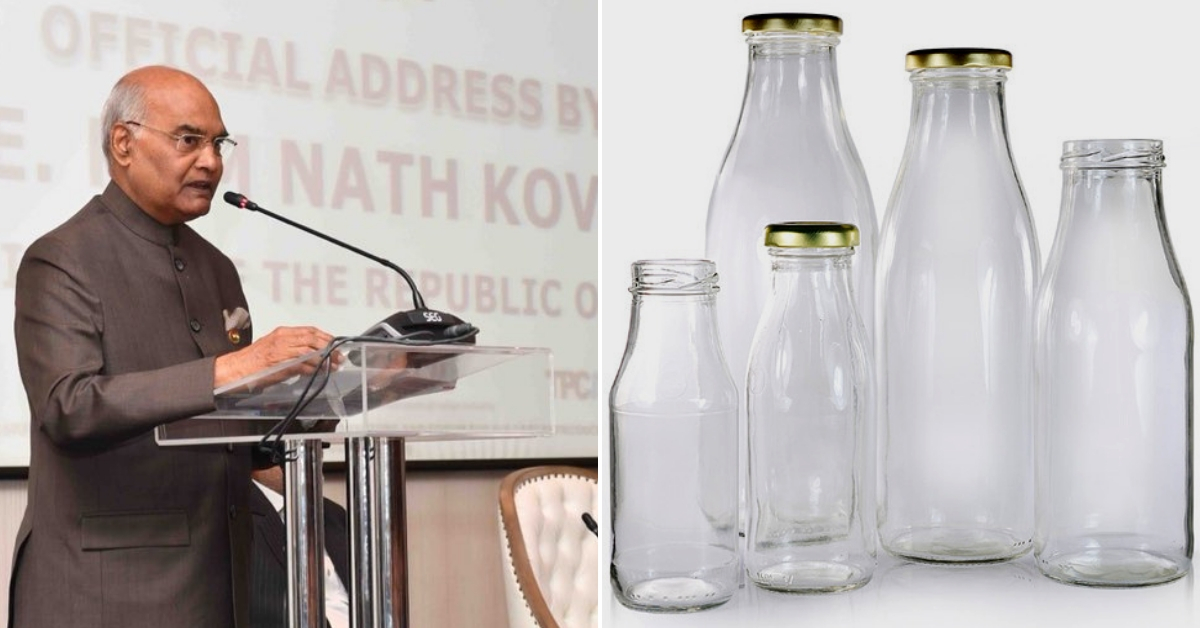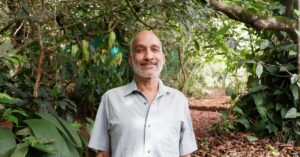1400 per Month to 0! Rashtrapati Bhawan Goes Green Through This Amazing Step
To commemorate his first year as the President of India, Kovind has also started a plantation drive at the Rashtrapati Bhawan Estate on Raisina Hill and the Rashtrapati Nilayam.

Just as his first year as the President of India comes to an end, Ram Nath Kovind has brought about a green change in his office—all the plastic bottles in his office have been replaced by glass bottles now!
The staff at the Rashtrapati Bhawan earlier used about 1200 one-litre bottles and 240 half-litre bottles every month—all disposable—so you can only guess the kind of environmental damage they brought with them. When the President hosted guests, the number of water bottles would increase.
But no more.
Putting an end to the use of disposable plastic bottles, the President’s office will now use only monogrammed glass bottles.

This change, implemented since July 25, 2018, will also be put into effect for the times when the office hosts state function and guests.
To commemorate his first year as the President of India, Kovind has also started a plantation drive at the Rashtrapati Bhawan Estate on Raisina Hill and the Rashtrapati Nilayam, the President’s Quarters in Hyderabad.
Currently, 40% of the 97 acres of Rashtrapati Nilayam is a green cover. President Kovind’s three-year plantation drive has prompted the Telangana forest department to take up 10.5 acres of barren land in the estate, undertaking soil management, moisture conservation and plantation there.
A total of 1600 trees and shrubs were planted on the Rashtrapati Bhawan estate.

The President has shown great initiative in curbing the use of non-recyclable plastic in India. As the saying goes, charity begins at home, and Kovind is leading the way for a greener future.
This year, several State Governments, college institutes and municipal corporations also banned single-use plastic.
You may also like: Beyond Duty: Shimla Judge Works All Night in Control Room to Ensure Water Supply
Like the Rashtrapati Bhawan, you too can get rid of this plastic menace from your lives and replace these items with more sustainable, eco-friendly products.
Sure, they might cost you a bit more than plastic products. But no good thing ever comes cheap, and small steps like these on an individual level will go a long way in protecting Mother Earth.
(Edited by Gayatri Mishra)
Like this story? Or have something to share?
Write to us: [email protected]
Connect with us on Facebook and Twitter.
This story made me
-
97
-
121
-
89
-
167
Tell Us More
We bring stories straight from the heart of India, to inspire millions and create a wave of impact. Our positive movement is growing bigger everyday, and we would love for you to join it.
Please contribute whatever you can, every little penny helps our team in bringing you more stories that support dreams and spread hope.



















